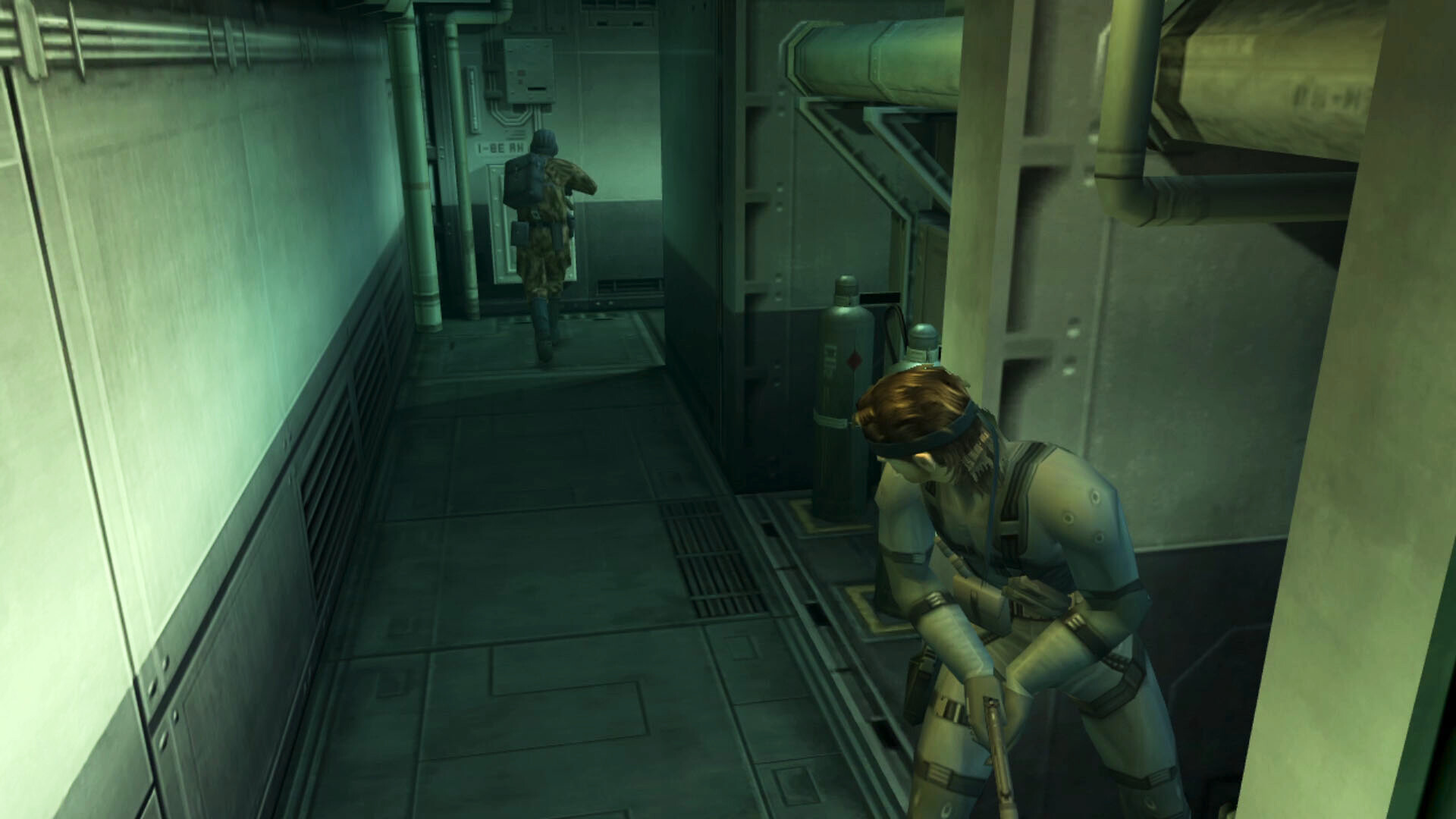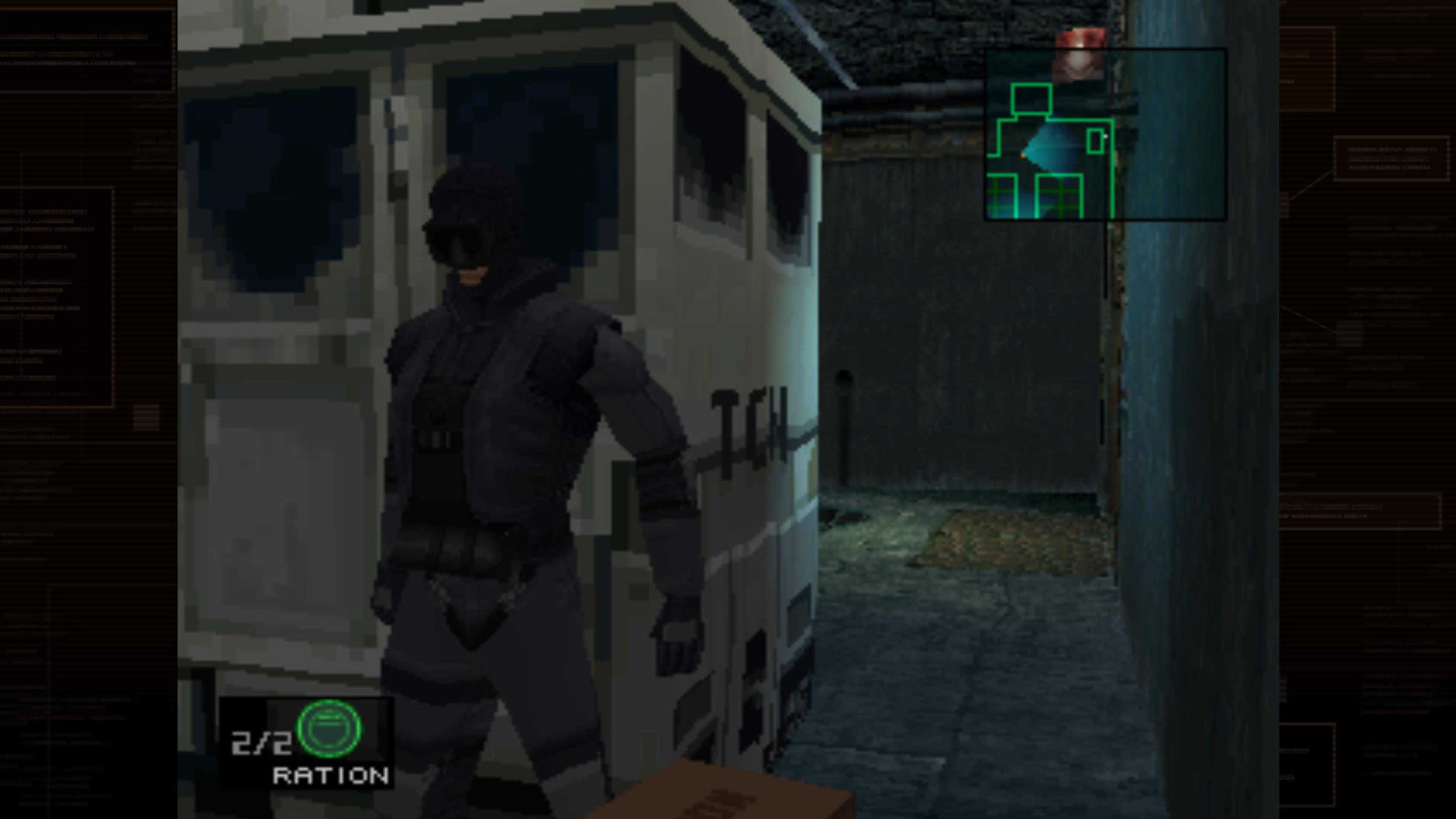TechRadar Verdict
The granddaddy of stealth returns in a no-thrills rerelease that lets a whole new audience experience the superlative sneak-’em-ups. A few “of their time” moments make the story awkward, but there’s no denying every game in this collection still has the magic.
Pros
- +
Deep mechanics that encourage intelligent play
- +
The best collection of stealth games ever released in one package
- +
Metal Gear Solid 2 and 3 hide their age well
Cons
- -
The treatment of women in the whole collection is grim
- -
Some very iffy controls
Why you can trust TechRadar
Platform reviewed: PS5
Available on: PS5, PS4, Xbox Series X|S, Nintendo Switch, PC
Release date: October 24, 2023
It’s rare to see a series commit to a feeling as hard as the Metal Gear stealth games. Whether you’re diving into Metal Gear or Metal Gear Solid 2, you’ll fill the same role: a super-spy sneaking his way into an enemy stronghold with nothing on you but a pack of smokes and a will to succeed.
From there, each game plays out like an action-thriller, equal parts stealth and explosive violence as your operative pulls a thread and unravels a sprawling conspiracy as time ticks away. Often this will involve throwing down with some fantastic bosses and a few giant mechs too - the Metal Gears hinted at in the title. Meanwhile, the same motifs come up again and again: terse radio calls, military firepower, and that slightly anxious feeling in the pit of your stomach, the nervousness you get just before you get spotted in a neighborhood-sized game of hide-and-seek tag.
Later games in the series amp up the cinematic production but also the intricacies of the stealth action and the combat - the latter of which making you feel like a cornered animal with your back to the wall, desperately trying to hit the enemy hard before scurrying back to a safe place to lick your wound and count your remaining ammo. But no matter how much extra computing power flows into the series, the original Metal Gear and the games that crept out after it never lost that core feeling of stealthy action.
Excuse the history lesson, but there’s no way around it. Metal Gear Solid: Master Collection Vol. 1 packages up the first five games in the franchise into one bumper collection of tactical espionage action. This means you get Metal Gear, Metal Gear 2: Solid Snake, Metal Gear Solid, Metal Gear Solid 2: Sons of Liberty, and Metal Gear Solid 3: Snake Eater, in addition to a heap of special features and regional add-ons like the superb VR Missions. These are re-releases rather than full remasters, so fans of the original games will find that they play exactly how you remember, and look a tiny bit shinier.
A solid recommendation

For new players, it’s hard to emphasize quite how influential the Metal Gear Solid games in particular were, and the good news is that they’ve mostly aged well, and are definitely worth picking up even now all these years later. Metal Gear and Metal Gear 2 are top-down and have a sort of retro chic because they’re old enough to be the sort of games that current indies are trying to riff off of. Metal Gear Solid is the only one in the bunch to have aged badly, but there will still be a good audience for how difficult the stealth actually is here to pull off, compared to the more forgiving - and much more interesting - detection systems in Metal Gear Solid 2 and Metal Gear Solid 3.
In every case, the mechanical act of playing the game is tight and interesting. The systems here are every bit as solid as stealth games like Hitman, Combat still works. Later games have location based damage and you can take soldiers out of the fight by shooting their gun arm, or slow them down by hitting them in the legs. However, it's imprecise, so often you'll find something cool has happened by accident - a grenade you threw in panic has crippled a response team's ability to keep up with you, or a stray bullet meant for someone else has stopped a guard being able to shoot you. Better yet, hit an alert guard in the radio in Metal Gear Solid 2 and he'll be unable to report seeing you, keeping the alarm un-raised and giving you time to clean up your mess.

Metal Gear Solid 2’s tanker prologue was iconic then, and it’s iconic now. Sneaking around a rain-slick tanker’s deck picking off Russian Spetsnaz is a perfect example of how auteur Hideo Kojima obsesses over not just the vibe of his work, but also the way each mechanic interacts with each other.
But the controls are where things start to suffer. Holding your gun ready to fire and moving requires you to hold two of the face buttons on your controller in tandem, and it’s often easier to move yourself into position to take out an enemy than to actually aim your weapon. Bizarrely, this works to make combat feel like something to be avoided, and it encourages you to get your sneak on.
Sign up for breaking news, reviews, opinion, top tech deals, and more.
Although how you do that is up to you. Something quite incredible about all three of the Metal Gear Solid games included here is how intricate they are, and the options that they give you. Take the humble cardboard box. In Metal Gear Solid you can use it to hide yourself from enemies and surveillance cameras, but you can also use it to ship yourself around the Shadow Moses facility by stowing away on trucks like an early iteration of fast travel. You can even get a wolf to urinate on it, covering you in their scent so that wolves in the game no longer attack you.
This is a recurrent theme - the intricate interactions, not the wolf urine. Although cardboard boxes do play a large part of every Master Collection game - who knew - there’s a huge number of simple systems that actually turn out to be incredibly complex, making the games feel impossibly deep even though they’re actually very simple.
Sneak and destroy

Soldiers in all three games feel intelligent but are actually very stupid indeed. They follow pre-set paths and behave in predictable ways, but the first time you’re cornered in Metal Gear Solid 2 and the game’s radar turns off to give way to a tight-angle shot of a squad clearing out the area they had previously trapped you in? You’ll jump to your feet. You’ll feel a rush of adrenaline that few games can match. Better yet, each of the stealth masterpieces have tight runtimes. Players used to the long-winded arcs of modern games will probably be stunned by how quickly Metal Gear Solid lets you get into the heart of its mystery, and it’s easily finishable in a handful of hours if you’re moving with purpose. The other games in the collection are the same: you get to the meat quickly, and then things keep moving at a steady pace until the credits roll.
I don’t know how much I subscribe to auteur theory, but I will say Hideo Kojima and his team of collaborators managed to make one of the most interesting stealth games of all time with Metal Gear Solid, before doing it all over again with Metal Gear Solid 2: Sons of Liberty and then accidentally inventing the survival genre with the slightly lesser Metal Gear Solid 3: Snake Eater 10 years before anyone else. Metal Gear and Metal Gear 2: Solid Snake are also worth playing, but don’t quite hit the same high notes.
The games’ stories pinball between spy fiction and some absolutely ridiculous conspiracy theories and supernatural elements. It’s to the credit of the writing team that these twists always feel earned and no matter how ridiculous things get, most players will be along for the ride every step of the way. Where it gets grim are the archaic parts that fans have long tried to wave off as foibles of auteur Hideo Kojima. There’s no other word for it but gross when Metal Gear Solid hero Solid Snake celebrates sneaking into an enemy base by skeezing all over his school-age intelligence operator Mei Ling, before immediately changing tack to hit on the older doctor that was on the same call. It’s easy to see the tip of the hat to James Bond , but it feels less like leading-man charm and more like 007 had drunkenly staggered into a family reunion to try his luck with everyone he wasn’t related to.
In Metal Gear Solid 2, Snake can hide inside a locker and kiss the posters of half-naked women taped inside with a loud lip-smacking noise. I grew up with these games, and I adore them even now, but it’s hard to defend the treatment and view of women in just about every game in the series. Metal Gear Solid 3 lets you switch to first-person mode during cutscenes just to look at the barely concealed chest of the KGB spy Eva during cutscenes. It won’t hinder most people’s enjoyment of the game, but this is the sort of thing that titillates teenagers, and as a man now in my mid-30s often spending cutscenes trying to shovel snacks into my mouth, I often found myself wishing Hideo Kojima and his team of writers had made their spies a little less horny and a lot more covert with their intentions.
Regardless, this collection is both a treasure trove in terms of video game preservation but also a terrific option for new players who are starved by the drought of top-notch stealth. While the fact these versions are a repackaged collection of the 2012 remasters may annoy some, there's no denying that every game here has stood the test of time, despite the fact half of the games included are over 25 years old.
Dig in, they don’t do tactical espionage action like this anymore.
Accessibility
Outside of basic subtitling, there's next to nothing here. Each of the games in the collection comes with its own option menu, but it's exclusively full of options to turn off blood or other details related to how the game works. Accessibility isn't catered for at all here.
How we reviewed
I played through each of the games in the Metal Gear Solid: Master Collection Vol. 1 on PS5. This took around 35 hours, but I found I already had the muscle memory to get through most of the areas in Metal Gear Solid and Metal Gear Solid 2 promptly, massively reducing how much I had to puzzle or stealth my way through as long-optimized routes from over a decade ago appear to be seared into my brain.
I also tried several of the included extra content packs, which added more stealth but felt somewhat superfluous; a nice addition for players who may feel the need to sneak even after the credits have rolled.
If you're craving more sneaking, see how Assassin’s Creed Mirage is the series’ first true stealth game. For more general recommendations, check out the best single-player games on PC.

Jake Tucker is the editor in chief of TechRadar Gaming and has worked at sites like NME, MCV, Trusted Reviews and many more. He collects vinyl, likes first-person shooters and turn-based tactics titles, but hates writing bios. Jake currently lives in London, and is bouncing around the city trying to eat at all of the nice restaurants.
